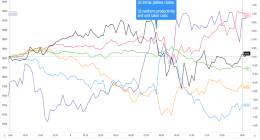A NEW discovery has uncovered the possible cause of half of the Earth’s sea population mysteriously disappearing.
Researchers have discovered that a poisonous gas had destroyed half of the world’s sea life, millions of years ago.
It was revealed that 20 years after the Cambrian explosion, something had destroyed 45% of sea life.
New data suggests that hydrogen sulfide, a chemical gas, killed the sea animals, according to Geophysical Research Letters.
“That chemical is lethal to all the marine animals,” study co-author Chao Chang, a geochemist at Northwest University in Xi’an, China, told Live Science.
“Basically, no animals could survive in an environment like that for a long time.”
Chang and his research team went to the Yangtze Platform, an underwater plateau, where they looked for molybdenum within the ocean.
The chemical elements allowed the team to get an idea of ocean conditions, according to Chang.
While underwater, they were able to get samples of the mass extinction period that had high levels of molybdenum.
With that discovery, the scientists were able to figure out that there had to be hydrogen sulfide since molybdenum can combine with sulfur to form insoluble compounds that are found in the sediments.
Most read in News Tech
“At the current stage, no one can say for sure what caused the expansion of sulfidic waters,” Chang said.
However, there is speculation that a lack of oxygen due to an organic matter explosion could have made its way to the sea floor, and rotted, causing the devastating chain of events.
Microbes could have begun eating the material, as well as the sulfate that is naturally in the water.
From there, they could convert the sulfates into hydrogen sulfide and pump the water full of this gas into the water.
The researchers believe that this spread happened on a global scale, due to molybdenum lasting hundreds of years.
“Basically, this means that before molybdenum can be removed from the ocean, seawater in the ocean will have already completely mixed many, many times,” Chang said.
The life cycle leads scientists to believe that molybdenum isotope levels in one part of the ocean could reflect the whole sea.










